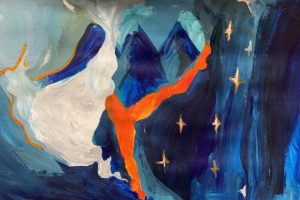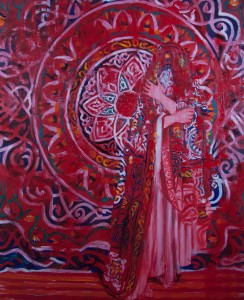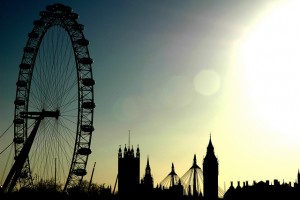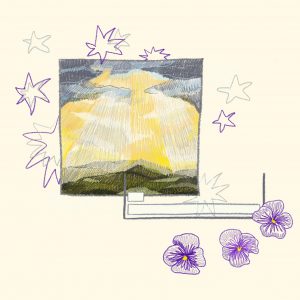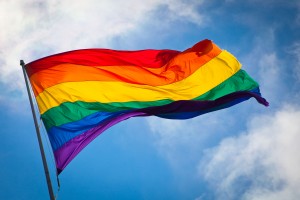“What Spring?”: Conversations in a Jordanian public hospital
by Rayan Fakhoury | February 27, 2015
A dreary winter fog envelopes Jordan’s capital, Amman, throughout December, though slivers of sunlight shed light on the city’s worn and damaged roads. The strain of unrest in the region is discernible to any visitor: heavy traffic, once an enemy to be conquered by Jordanians through strategic timing and innovative route-planning, is now an inescapable, unbearable reality. The license plates come from all over: Damascus, Baghdad, Riyadh, Doha, Cairo. Though the king has made a point to introduce vibrant Christmas decorations across the city as a demonstration of Jordan’s commitment to religious tolerance and coexistence, the latent tension between Islamists and Secularists remains palpable, if more discrete than elsewhere in the Arab World. The country has survived the worst of the tumult since 2011, but it has not emerged unscathed. In this air of chaos and disarray, the principles of social justice, democracy, and equality that were powerfully espoused across the region four years ago seem to have drifted into an abstract darkness, buried under the layers of affliction and suffering that have plagued the Arab world incessantly since.
Jordan has not been entirely spared from the torrent of dissent that has swept across the region in these four years. Across one of its borders the Syrian Civil War rages with no end in sight. Across another, the self-proclaimed “Islamic Caliphate” is demonstrating its ability to wipe out national borders and identities. At the other end of the Jordan River, too, the Palestinian-Israeli conflict continues to claim lives on a daily basis. At least 700,000 Syrian refugees have flocked to neighbouring Jordan since 2011, and the rise of ISIL has only intensified the Iraqi exodus that began in 2003. For a state with a modest population of just 6.5 million – many of whom are themselves Palestinian refugees of the many conflicts of the 20th century – the burden is a heavy one.
The Jordanian population has perhaps been the weariest of the Arab populations towards the uprisings of 2011, even in its earliest, hopeful days. While the mantra of “The people want the fall of the regime” echoed across the battered streets of the Middle East, Jordan’s protestors were generally satisfied with chanting “The people want reform of the regime”. Perhaps they were suspicious of what may come to replace the regime if it fell, and given the experiences of Egypt, Libya, and Syria, perhaps they were right to be. Today, even those moderate chants seem to have been lost somewhere in the midst of the unrest that surrounds the small state.
The evidence of these burdens was visible in one of Amman’s public hospitals. Layers of paint on its walls were flaking to reveal the cracks that lay beneath them. Public resources were clearly draining, though tremendous effort was made to ensure that the rooms were clean, sterilised, and professional. The people – doctors and patients alike – appeared fatigued and weary, though there was air of silent determination between them.
I asked one young doctor what she thought Jordanians, and in particular younger generations, wanted today. Were the principles of social justice that drove so many to insurrection anywhere on the horizon? She hesitated for a moment, her dark animated eyes squinting slightly in quiet consideration, before replying. “Honestly? I think most just want to leave. Generally speaking, though, they can’t afford it.” I later learned that she herself was studying to work as a doctor in the United States.
In the same unit I met a remarkable Iraqi woman who had fled her home country in the midst of the 2003 invasion and has been living in Amman ever since. When questioned about the Arab Spring, she replied with: “What Spring?” and allowed a grin of incredulity to take shape on her face. “Times were tough before, but at least we lived. I know some people, among them the staunchest opponents to Saddam’s regime, who have told me they want nothing more than to return to the days of his rule. I imagine the same is true for many of the other countries in the Arab world now. People want to live.”
The same themes seemed to pervade most of my discussions. “Stability”, “security”, “food”: these were the crucial demands of the people. One Egyptian nurse spoke with passion about how the nation grew tired of sending its sons to the army or police with no certainty of their return. “With Sisi, the streets feel safe. That’s what counts.” Abstract ideals of democracy and justice, promised to them over and over again by different groups for decades – the Americans, the Soviet Union, the United Nations, their own leaders – had lost whatever meaning they once may have held to the masses. The phrase “democracy isn’t fit for our people” loomed on more than one occasion, always in a tone of despondent reflection. The burdens of the Arab Spring had apparently acted as the last straw for many. As Syrian refugees piled in their masses through the small hospital’s burn unit, people inevitably asked themselves: “Do we want this?” The answer, for the most part, was clear.)
There was one dissonant voice among them: a relatively young doctor and political activist, no older than 40. He told me of his involvement in the social movements that surfaced with a vengeance across the Arab world in 2011, of how he and other Jordanian activists went to Tahrir Square to stand by their Egyptian brothers, and of how the reform movement in Jordan developed over time. “It’s true that the demands for change have retreated a great deal in the past couple years, and with good reason. We’ve become a playground for the conflicts of regional and global powers, and it’s the people who suffer.”
I asked him if he still had hope for a better Middle East. “It’s not hope”, he replied, “It’s knowledge. As long as there is injustice, change is inevitable. You can put out a flame, and when another one appears you may be able to put that one out too. But if you don’t treat the underlying source of the fire, an inferno will eventually come around that devours it all.”
Image Jamie Hladky
